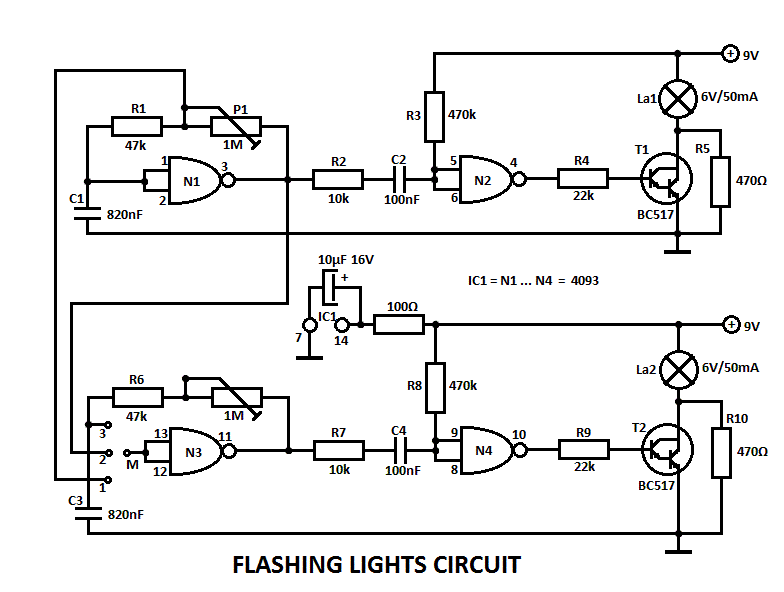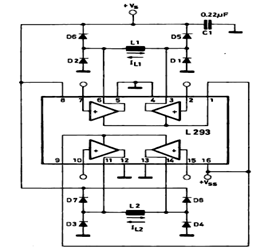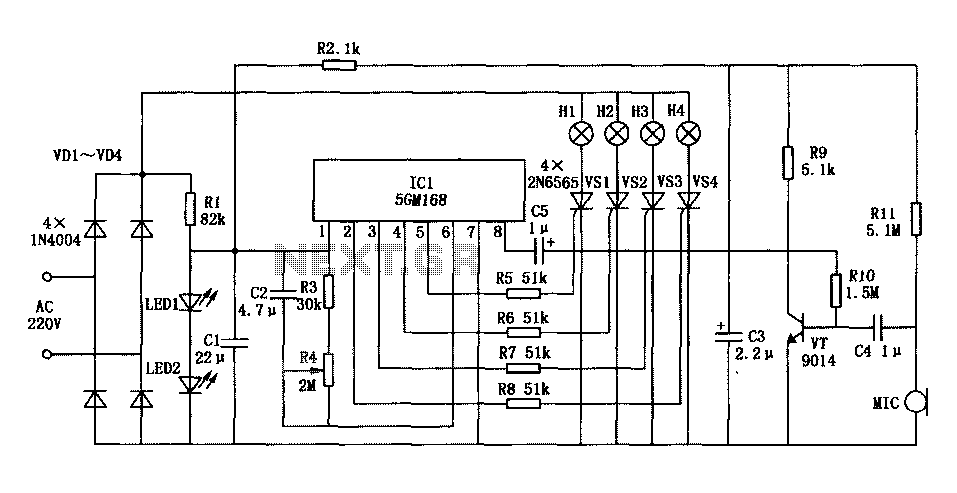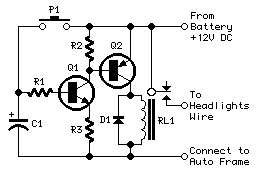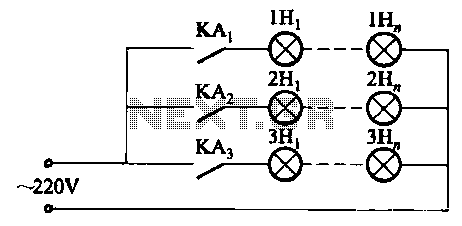
SH-123 ASIC holiday lights
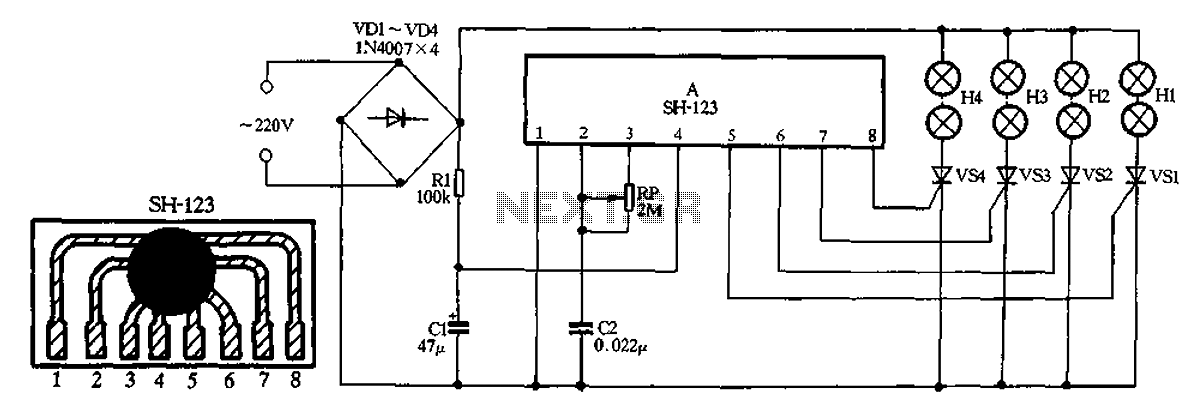
A 220V AC input is processed by a bridge rectifier consisting of diodes VD1 to VD4, which supplies electricity to four lights labeled H1 to H4. The circuit includes a limiting resistor R1 and a filter capacitor C1 to stabilize the output voltage. The circuit is designed to provide four controllable outputs, LI to L4, which can be sequentially turned on and off to create an effect of movement among the lights H1 to H4, simulating a racing scenario. A potentiometer RP is included to adjust the flow rate of the lights H1 to H4.
The circuit begins with the 220V AC input, which is directed to a bridge rectifier formed by diodes VD1 through VD4. This configuration converts the alternating current (AC) into direct current (DC), ensuring a consistent voltage supply for the subsequent components. The output from the rectifier is then smoothed by filter capacitor C1, which reduces voltage ripple and provides a more stable DC voltage.
Resistor R1 serves as a current limiting component, ensuring that the current flowing to the lights H1 to H4 does not exceed safe operating levels, thereby protecting the LEDs or bulbs from potential damage. The four outputs, LI to L4, are designed to control the operation of the lights in a sequential manner. This can be achieved using a microcontroller or a simple relay-based control circuit, allowing for the lights to be turned on and off in a programmed sequence.
The use of potentiometer RP allows for user adjustment of the flow rate, which in turn affects the timing of the lights' operation. By varying the resistance of RP, the duration for which each light remains on or off can be modified, creating different visual effects that simulate the excitement of a horse racing event. This feature adds an element of interactivity to the circuit, as users can customize the speed and behavior of the light sequence according to their preferences.
Overall, this circuit design provides an effective means of creating dynamic lighting effects suitable for entertainment applications, combining basic electronic components to achieve a visually appealing output.220V AC by VD1-VD4 bridge rectifier, all the way to supply four lights Hl - H4 electricity, another pass resistance Rl buck limit, filter capacitor C1 supply manifold A electri city. Manifold 4 outputs LI-L4 direct drive controllable VSl ~ VS4 sequentially turned on and off so that the lights were lit H1 ~ H4 light, forming a sense of movement in Happy Valley. Adjust potentiometer R P resistance can change four lights H1 ~ H4 flow rate of horse racing.
The circuit begins with the 220V AC input, which is directed to a bridge rectifier formed by diodes VD1 through VD4. This configuration converts the alternating current (AC) into direct current (DC), ensuring a consistent voltage supply for the subsequent components. The output from the rectifier is then smoothed by filter capacitor C1, which reduces voltage ripple and provides a more stable DC voltage.
Resistor R1 serves as a current limiting component, ensuring that the current flowing to the lights H1 to H4 does not exceed safe operating levels, thereby protecting the LEDs or bulbs from potential damage. The four outputs, LI to L4, are designed to control the operation of the lights in a sequential manner. This can be achieved using a microcontroller or a simple relay-based control circuit, allowing for the lights to be turned on and off in a programmed sequence.
The use of potentiometer RP allows for user adjustment of the flow rate, which in turn affects the timing of the lights' operation. By varying the resistance of RP, the duration for which each light remains on or off can be modified, creating different visual effects that simulate the excitement of a horse racing event. This feature adds an element of interactivity to the circuit, as users can customize the speed and behavior of the light sequence according to their preferences.
Overall, this circuit design provides an effective means of creating dynamic lighting effects suitable for entertainment applications, combining basic electronic components to achieve a visually appealing output.220V AC by VD1-VD4 bridge rectifier, all the way to supply four lights Hl - H4 electricity, another pass resistance Rl buck limit, filter capacitor C1 supply manifold A electri city. Manifold 4 outputs LI-L4 direct drive controllable VSl ~ VS4 sequentially turned on and off so that the lights were lit H1 ~ H4 light, forming a sense of movement in Happy Valley. Adjust potentiometer R P resistance can change four lights H1 ~ H4 flow rate of horse racing.
